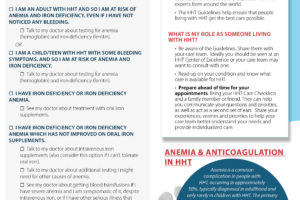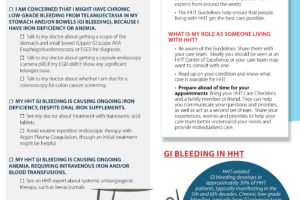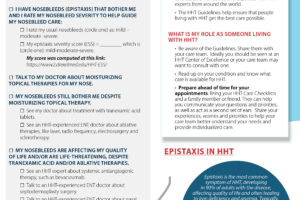Nuts and Bolts of A Clinical Trial – the PATH-HHT Study (Recorded)
Research is the key to the future health and quality of life for HHT patients.
“Diseases can only be cured when scientists understand them. This understanding, which comes from basic research, leads to new drugs and treatments.”
~Dr. Christopher Hughes, Chair of the Cure HHT North American Science and Medical Advisory Council
Dr. Vivek Iyer, Director of the HHT Center of Excellence at Mayo Clinic and local site Principal Investigator for PATH-HHT Study, and Dr. Keith McCrae, Principal Investigator overseeing the PATH-HHT Study at the Cleveland Clinic HHT Center of Excellence introduce the audience to clinical trials, including the factors that are considered when a clinical trial is designed, the different types of clinical trials, and the importance of clinical trials in developing new treatments for disease. The details the PATH-HHT trial of pomalidomide for treatment of HHT will also be discussed as an example relevant to the HHT population.
Through a generous donor, Cure HHT has established a Travel Expense Reimbursement Program for eligible patients enrolled in this study. For more information, contact [email protected].
LEARN MORE about the PATH-HHT Study
WATCH the Facebook Live video of Dr. Anthony Anzell, HHT patient, scientist and Cure HHT Board Member
Key points from webinar
- Gold Standard of Clinical Trials is a randomized, double-blind study
- PATH-HHT Study is the first double-blind, randomized drug trial in HHT
- The primary measurement for improvement in patients taking Pomalidomide is a reduction in Nosebleed Severity Score (ESS)
- Participants in the study receive clinical care, including genetic testing, for free
- All eligible participants must visit a recruiting HHT Center for at least 2 in-person visits; all other visits can be done remotely and PATH-HHT Study participants can apply for travel reimbursement
- Celgene, the manufacturer of Pomalidomide, has agreed to provide the drug for free to study participants who want to continue on the drug as well as those participants who received the placebo





